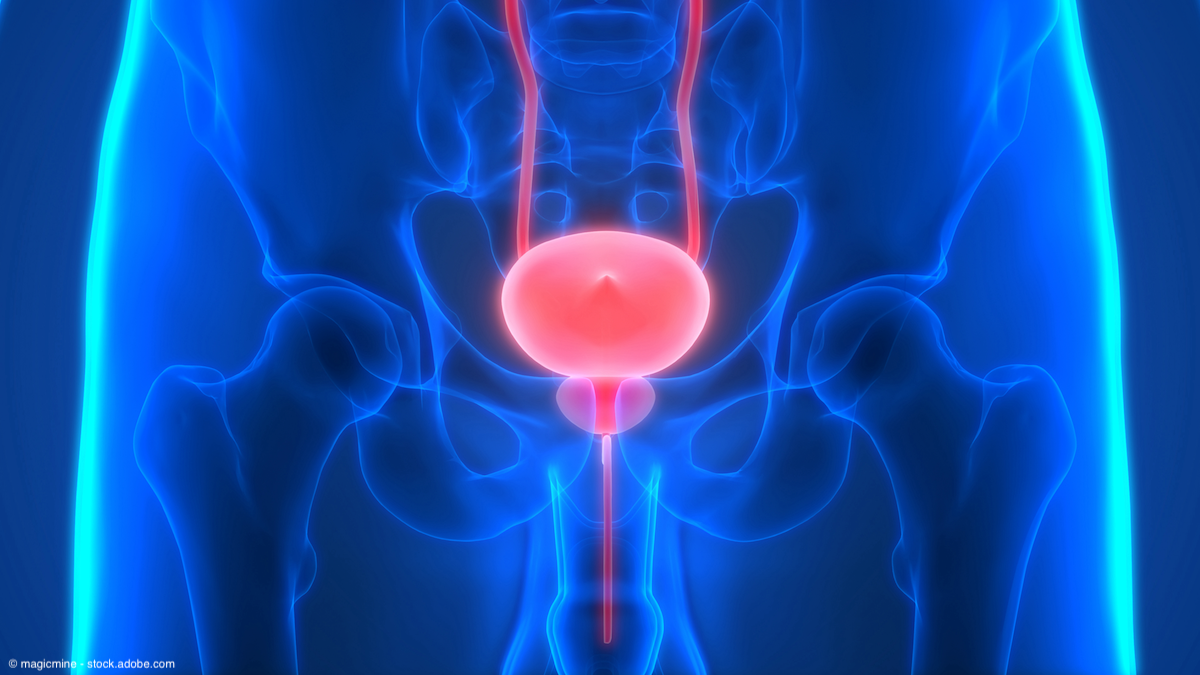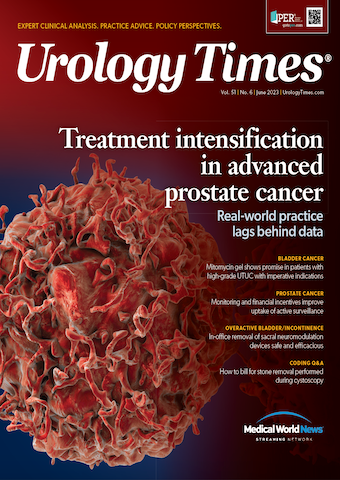Publication
Article
Urology Times Journal
Mitomycin gel shows promise in patients with UTUC and imperative indications for therapy
Author(s):
“The results of the study imply that UGN-101 is not only a renal-preserving therapy for UTUC in this comorbid population, but could potentially delay the time to dialysis or radical nephroureterectomy," says Kyle M. Rose, MD.
Intracavitary mitomycin gel (UGN-101) was found safe and efficacious in high-grade upper tract urothelial carcinoma (UTUC) in patients for whom nephrourectomy (RNU) is not a viable option, according to data published in European Urology Focus.1
Median follow-up was 8.7 months for the entire cohort, and 9.2 months for those with high-grade disease.

UGN-101 is FDA approved for use in low-grade noninvasive UTUC based on findings from the OLYMPUS trial (NCT02793128). The current study sought to assess the treatment in patients with UTUC and imperative indications.
“We initiated this study after noting that surgeons were utilizing UGN-101 in patients with imperative indications for renal preservation; ie, those who could not undergo radical nephroureterectomy. Included in that cohort were patients with high-grade urothelial carcinoma,” said lead author Kyle M. Rose, MD, in correspondence with Urology Times®. Rose is a urologic oncology fellow at Moffitt Cancer Center in Tampa, Florida.
The study retrospectively analyzed 48 patients who received UGN-101 for UTUC with imperative indications for therapy using registry data across 15 institutions. Median follow-up was 8.7 months for the entire cohort, and 9.2 months for those with high-grade disease.
In total, 17 patients (40%) showed no evidence of disease on ureteroscopy after induction therapy. Of those, 88% had no evidence of disease at a median of 10.8 months after induction. Disease progression was observed in 6 patients (14%) at a median of 6.2 months following induction therapy.
Among those with high-grade disease (n=11), 5 patients (45%) had no evidence of disease at the initial disease evaluation after induction, and 2 patients (18%) had progression at a median of 10.8 months post-induction therapy. Only 1 patient had progression to high-grade T1 disease and required RNU for pT3N2 disease.
Adverse events experienced by patients included pyelonephritis (8%), ureteral stenosis (8%), anemia (6%), and acute renal failure (4%).
Rose added, “The results of the study imply that UGN-101 is not only a renal-preserving therapy for UTUC in this comorbid population, but could potentially delay the time to dialysis or radical nephroureterectomy.”
The study authors indicated that longitudinal follow-up is needed to assess the durability of results.
Reference
1. Rose KM, Murray KS, Labbate C, et al. Mitomycin gel (UGN-101) as a kidney-sparing treatment for upper tract urothelial carcinoma in patients with imperative indications and high-grade disease. Eur Urol Focus. [published online ahead of print April 12, 2023.] Accessed April 26, 2023. doi:10.1016/j.euf.2023.03.016.





























